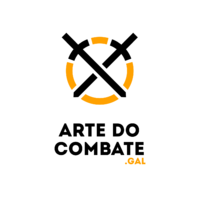|
|
You are not currently logged in. Are you accessing the unsecure (http) portal? Click here to switch to the secure portal. |
Arte do Combate
Arte do Combate is a school focused on the research, reconstruction and practice of early Kunst des Fechtens using sword in one and two hands, Messer, dagger, lance, and poleaxe, in and out of armour.
Research is focused on the XV century exemplars of the main four branches (so-called Lew, Ringeck, Danzig and 3227a) of the tradition. 3227a is used as the main discursive framework.
Interpretation and reconstruction are made as close as able to the sources, while at the same time attempting to build a cohesive system. Where divergences exist in the sources, they are mentioned and studied as such. When possible, the shared principles underlying different approaches are highlighted. When an interpretation calls for interpolation, extrapolation or interpretation, an effort is made to point that out.
Practice is understood as a modern approach to a historical art. As such, classes are carried in a modern, inclusive and respectful manner. Students are allowed to graduate their implication into the proposed activities, choosing which ones to sit out.
The main body of practice is dedicated to the two-handed sword (with both hands on the grip, hence longsword) on foot and without armour, following the main body of verse and commentary preserved in the sources. Ringen is introduced progressively to build structure and close-range resources. Messer or one-handed sword sessions are interspaced in this practice to study how principles and technique translate to a shorter weapon. Spear, poleaxe and other staff weapons are used in more advanced training to project the same theoretical elements into longer and guardless tools.
Classes usually span an academic year (about nine months), with two trainings a week. The rough order of the Zettel is used as a lesson plan. Students are however welcome to incorporate themselves at any point during the course, since the learning approach is iterative: each year the same topics are covered over again, refining aspects for more advanced students while the newer ones learn the basics.
There are presently no organised ranks for school members. Experience and progression through theory and practice are self-evaluated goals.
Occasional seminars are thrown into the lesson plan for variety and to take advantage of opportunities, such as visits of foreign fencers, masterclasses in other arts, etc.
Several times a year exhibitions are performed across the city in public squares, schools, malls, etc. Particularly in these public situations effort is put on presenting the art in a serious, professional manner. Aesthetics are used to stress the modern approach to historical practice: students wear modern sports clothing, preferably of an uniform black, with the logo of the school.
Blog
Resources for interpretation and research are published (in galician/portuguese language) in the blog Nur Eyne Kunst, associated to the school. That website hosts a page of recommended bibliography and a list of general resources for students, including translations of the Zettel, cheatsheets of Kunst des Fechtens terminology, an audible glossary to learn how to pronounce the terms, etc.
That same blog also serves as home for the map of HEMA groups in Brazil, Galiza and Portugal — essentially the lusophone historical fencing sphere.
Publications
Research and theory resources are published in several forms, including the mentioned Nur Eyne Kunst blog. Some of the available ones are:
- A freestyled translation of the Zettel into galician/portuguese], apt for use in the classes.
- A similarly free translation of Andre Paurñfeyndt's Twelve Rules.
- Cheatsheet of Kunst des Fechtens terminology.
In collaboration with AGEA Editora, Arte do Combate has published a galician/portuguese translation of GNM HS 3227a titled Há Uma Única Arte da Espada (english: There is Only One Art of the Sword). There is a dedicated page in the blog, and it can be bought at the publisher's website. The book is aimed towards Arte do Combate students, but it can be useful to other lusophone practitioners as well.
The first half of the book is a collection of context-setting essays encompassing analysis of the original manuscript, foliation and structure; an evaluation of its possible creation context; a study on the weapons associated to the art; a very brief overview of the socio-historical time frame; a short recapitulation on how violence was viewed in society at the time, including the role of judicial combat.
The second half is a free translation of the relevant parts of GNM HS 3227a. As described in the edition and translation criteria found in the first half of the book, the aim is to provide a readable and workable text in classes, rather than a strict word-by-word rendition. Nearly all pages feature length translation notes, however, specifying — as per the criteria on interpretation described above — where liberties were taken with the original text, why, and what alternate readings the source might have. Six other whole or partial translations of the manuscript were used as references (Stoeppler, Zabinski, Hull, Wallhausen, Kleinau and Farrell) and are frequently commented through these notes as well.

